During my trip to Belgium, I ate and learned so much about local food. The waffles, mussels, chocolate, beer…etc. The list was endless! To my surprise, in that list, Belgium also claims (French?) fries as their own.
This sparked my interest, and as it turns out, there’s a huge debate with the French on who invented the fry. So I thought, what else has an unexpected food origin, and have even sparked a food war of their own.
You might already be familiar with some of them, but I’m sure others will shock you! Read on to find out!
Psst! This blog post contains affiliate links in it which sends me a bit of extra money if you use them… at no extra cost to you!
5 Surprising Food Origin Stories
1. French Fries Aren’t Really French… Or Are They?
Okay, so French fries are still French, but they might not be French from France. Belgium is split into two main regions: the French in the south (Wallonia), and the Flemish in the west (Flanders).
The debate is that French fries originated from the Wallonia region, and that’s where we got the name.
You might also be interested in reading…

The Belgian Side Of The French Fry
The unexpected food origin of the French fry is from centuries ago when villagers along the River Meuse caught fish and fried them for dinner. But during the winter months, the river would freeze over – cutting off their access to fish.
Because they couldn’t fish, the only food they still had access to were potatoes. They would cut them up small enough to look like the little fish and fry them the same way.
It’s believed that villagers had been doing this since the 1600s. But, this practice was only discovered and brought back to America during WWI, when visiting soldiers noticed.
They dubbed them “French” fries because, as I said, this all went down in the French-speaking part of Belgium.

The French Side – Interesting Food Stories
A recipe for “pomme de terres frites” (fried potatoes) was recorded in a cookbook belonging to Thomas Jefferson from 1824. It’s believed that he brought the recipe back from his travels to France.
But, the recipe isn’t for typical fry-like thin sliced potatoes. They were actually potato shavings, and they were more round and coin shape than the strips we know (and love) today.
On top of that, they only really became popular in the 1870s and early 1900s (which starts to add up to our Belgian timeline for the introduction into America… suspicious?)
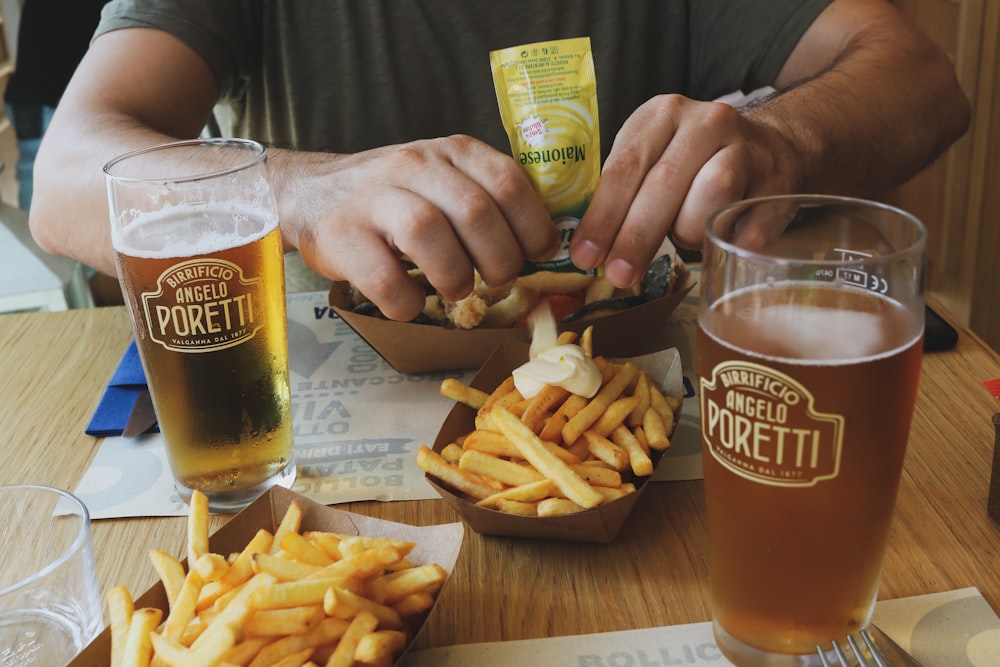
So Who Gets The Credit For The French Fry?
There are still some intense debates over whether the Belgian story is true.
But, the sketchy part is that France would prefer if no one got credit, rather than Belgium. Which seems a little suspicious to me.
The French argue that people have basically been cooking with potatoes since time began, even Adam and Eve had them, and anyone could have come up with something as simple as frying potato slices in all that time.
So while France spends time debating that, Belgium is petitioning UNESCO for the fry to become an official icon of their heritage. Just based on that, I think Belgian’s deserve to win this one.
Interesting Food Stories: French Fry Fun Fact
The average American eats 29 lbs of fries a year… so next time someone asks… do you really want fries with that?

2. Whiskey Surprising Food Origins
Today, it’s a common belief that Whiskey was first invented by the Scotts. It’s easy to believe, as Scottish Whisky has made quite a name for itself around the world as Scotch. So what’s whiskey’s unexpected food origin story?
If we go way back, it was actually the ancient Mesopotamians and Greeks who invented methods for the distillation of water. And then it was monks in mainland Europe who used this process to make wine.
But if we want to know who first produced Whiskey as we know it today, then the first known date is actually in Ireland.
They have documentation from 1405 that the head of a clan died from alcohol poisoning. Historians believe that this was from whiskey.

So Why Is Scotch So Much More Well Known Than Irish Whiskey?
During my visit to Ireland a few years back, I went to the Irish Whiskey Museum. We were told what they believe to be the true origin story of whiskey. I left essentially believing the Scotts “stole” whiskey from the Irish.
This unexpected food origin story goes back to the 19th century, Irishman Andrew Usher invented a faster way to distill whiskey. It would speed up production, allowing distilleries to sell more, for less.
Irish distilleries weren’t pleased with his method, saying it wasn’t authentic.

Disgruntled, Usher brought his new product to the Scotts, and they fell in love with the idea. Andrew Usher invented what we know today as blended whisky.
So thanks to an Irishman, Scotland was able to fast track production and sales, allowing them to grow globally. While Scotch was on the upward trend, Irish whiskey saw a huge dip in sales.
Finally, in recent years, Ireland has started to make a name for itself in the world of whiskey once again. But to make sure they’re better than the Scotts, instead of ageing for a minimum of 3 years, they age it for 3 years and 1 day.
Interesting Food Story Whiskey Edition
John Walker (the creator of Johnnie Walker Scotch) was actually a teetoler. That’s someone who abstains from drinking alcohol.
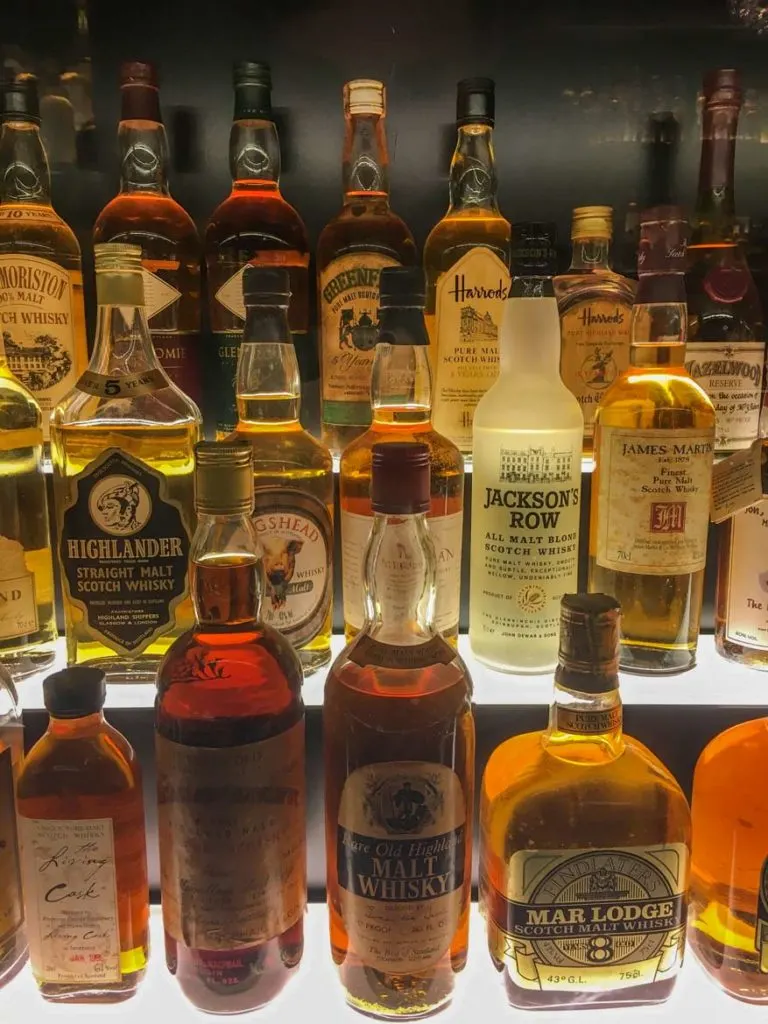
3. Unexpected Food Origin Of Fish & Chips
The first thing I had to try during my trip to London was fish and chips. But this pub favourite has some very surprising food origins. Fried fish in this style doesn’t originate from London at all or even the UK.
In fact, it was Jewish immigrants from Portugal who brought this dish over to the UK when they were fleeing persecution. I mean, it kind of makes more sense for it to come from Portugal, a country known for seafood exports, rather than London.
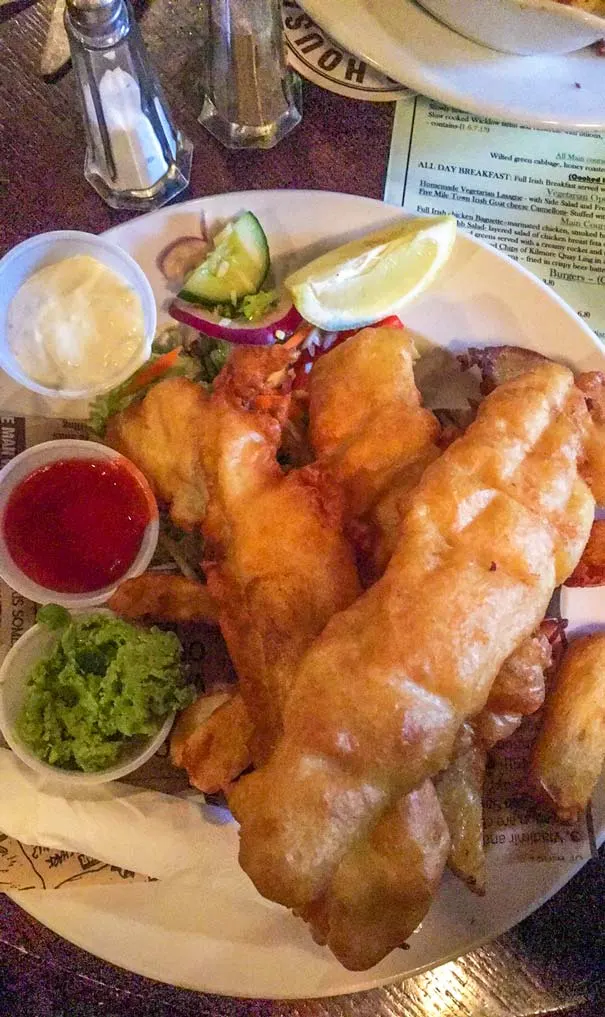
Okay, so this type of fried fish is a bit different from the classic we know today. For starters, it was breaded instead of fried. But the biggest difference was that it was eaten cold because it was eaten for a typical Shabbat lunch.
Since Shabbat is a day of rest, it’s customary to refrain from doing work, so no cooking allowed on that day! Because of that, the fish was prepared on Friday and only eaten on Saturday (Shabbat), and there was no way to warm it up.
Food History Stories: How Did Fish Meet Chips?
This part actually originates from England, but it wasn’t meant to be pub food. Again, we have the Jews to thank for it! Apparently, fried potatoes were perfect for keeping the Shabbat fish fresh overnight. And the rest is history!
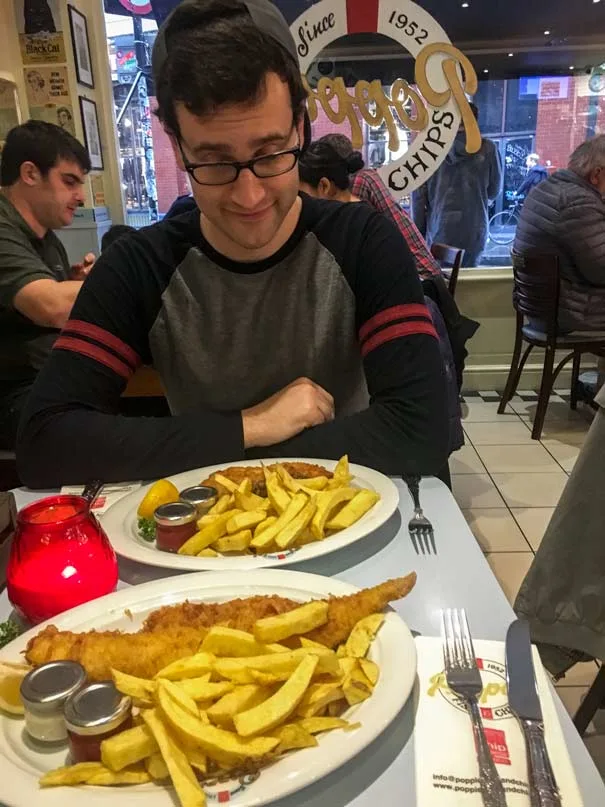
4. Food Origin Stories: Crescent = Croissants
These delicious pastries aren’t originally French at all. They’re believed to be based on the Austrian delicacy called Kipferl.
A Kipferl is a crescent-shaped pastry that can be plain or nut-filled and dates back to the 13th century. It’s meant to be light and buttery, with a vanilla almond flavour. The kipferl became an Austrian breakfast staple as of the 16th century. Sound familiar yet?
In the 17th century, an Austrian man developed the recipe we all know and love today, by inventing what we call the puff pastry – a key ingredient for the perfect croissant.

So How Did It Become French?
There are actually several rumours about how this dish became French. My favourite is that Marie-Antoinette, Archduchess of Austria before becoming Queen of France, would sneak them into the palace to enjoy a taste of home in private.
But the story with the most historical proof is that of Austrian August Zang, who opened up an upscale pastry shop in France in the early 19th century. People began to refer to the kipferl as the croissant because it’s shaped like a crescent. Croissant is french for crescent.

5. Three Way War Over Crème Brûlée
It seems as though the French like taking credit for a lot of food, and as a result, getting themselves caught in food wars. Don’t worry, this is the last one, I promise! So crêpes are safe!
Mmm crème brûlée! A classic French dessert with caramelized sugar hiding delicious custard underneath. As it turns out, France is in a three-way food war between England and Spain for who originally came up with it.
According to historians, it’s hard to know who has the rightful claim on this one. During the middle ages, custard was quite popular and made its way across Europe. But that still leaves the questions of who invented the caramelized sugar topping.

The French Side
The name Creme Brûlée only came about in the 19th century in France. But the earliest known reference to a dessert like this is from a French cookbook from 1691.
However, earlier renditions of this dessert did not include burning the sugar on top. Instead, there was a pre-made caramel disc that was placed on top to serve.
The Catolonian Side
The Catalonians have a recording of “crema Catalana”, their version of crème brûlée, from the 18th century. It’s the same idea as crème brûlée, cold custard with caramelized sugar on top, but there are a few differences.
For starters, it’s not cooked in a bain marie, but slow-cooked on the stove. The recipe is also a bit different since it uses milk instead of cream, cornstarch, and just the egg yolk instead of the whole egg.

The English Side
In the 17th century a student at Trinity College in Cambridge came up with a custard dessert with burned sugar on top.
The sugar was burnt to have the school’s crest on it, and that’s how it got its name – “Trinity Burnt Cream”. It’s also not as sweet, and it’s thicker than modernized crème brûlée.
Because of these differences, some English deny that it’s even remotely the same dish. But nonetheless, their version remains on the menu for you to judge and see what you think of this age-old dish.

Extra! Local Food War
While Belgium is fighting over their beloved “frites”, as they call them, they also have a local food war going on. In Ghent, two local families are debating who invented the Cuberdon. If you’ve ever been to Belgium, you’ll find these jelly-filled candies everywhere.
Read about the local debate.
The ultimate digital travel bundle: travel planner & daily travel journal
My digital travel planner template has everything you need to plan your vacation. And keep track of your travels every day with my digital and printable travel journal.

I hope I surprised you with some good food origins today, so why not share the knowledge others! Pin, Tweet, Facebook…etc. whatever you’re social media of choice is!
Related Posts
- English, Irish & Scottish Breakfast Tea: How Are They Different?
- Comparing Grades of Matcha: Culinary And Ceremonial Matcha Powder
- Finding The Best Matcha Green Tea Snacks You’ll Want To Try
- Easy Traditional Belgian Liège Waffle Recipe You’ll Love
- London Fog Tea Latte Recipe For A Sweet Homemade Treat




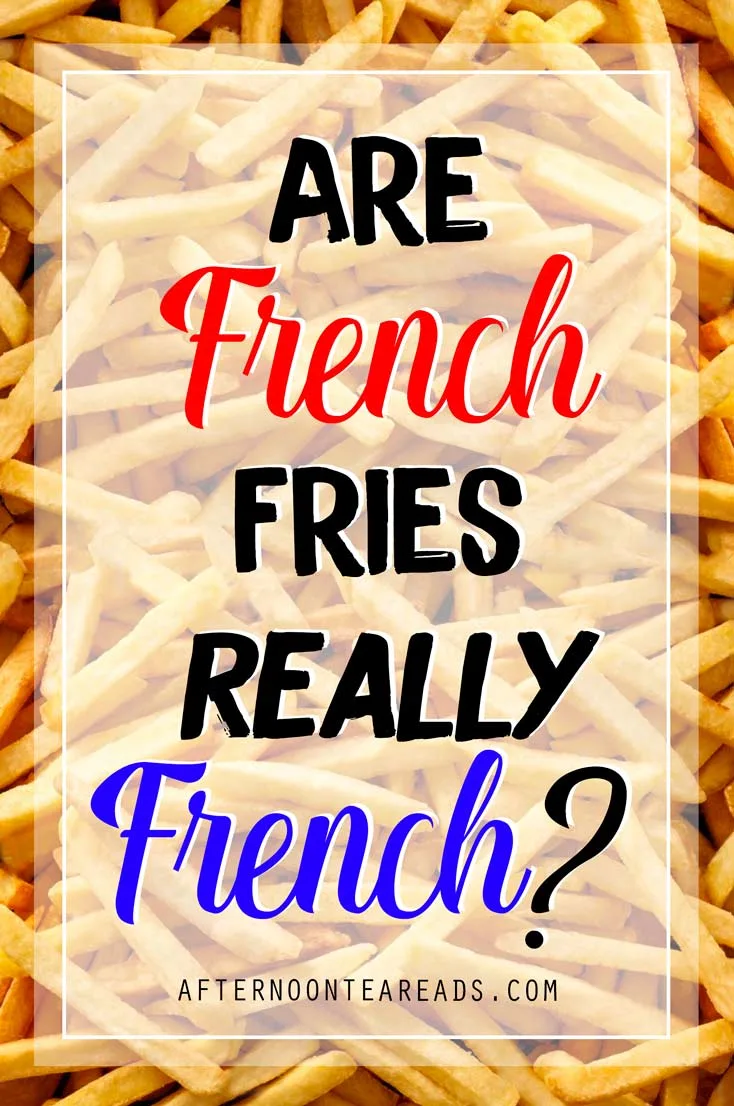

Top 20 Best Brussels Hidden Gems You'll Actually Want To Visit -
Saturday 21st of March 2020
[…] Now let’s get into the nitty-gritty of Belgian delicacies. French fries are originally from Belgium NOT France… don’t believe me? Check out my true food origins stories! […]